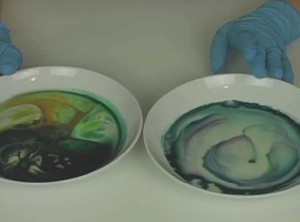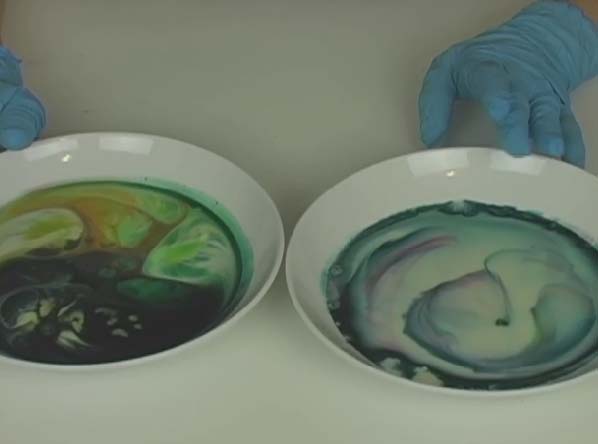 Have you ever tried washing dishes without soap? It doesn’t work well, especially if there’s a lot of grease, fat, or oil on the dish!
Have you ever tried washing dishes without soap? It doesn’t work well, especially if there’s a lot of grease, fat, or oil on the dish!
The oils and fats are slippery and repel water, which makes them a great choice for lubration of bearing and wheels, but lousy for cleaning up after dinner.
So what’s inside soap that makes it clean off the dish? The soap molecule looks a lot like a snake, with a head and a tail. The long tail loves oil (hydrophobic) and the head loves water (hydrophilic). The hydrophilic end dissolves in water and the hydrophobic end wraps itself around fat and oil in the dirty water, cleaning it off your dishes.
Let’s do an experiment that will really make you appreciate soap and fat:
[am4show have=’p8;p9;p11;p38;p92;p68;p80;p101;’ guest_error=’Guest error message’ user_error=’User error message’ ]
Materials:
- whole milk (if you have it – otherwise, use lowfat)
- food dye
- bowl
- liquid soap
Download Student Worksheet & Exercises
While it may not look like it (or taste like it), milk is mostly water with minerals, proteins, and fat trapped inside. When you add a drop of soap, the hydrophobic end races around and grabs the fat and links up with other tail ends of soap molecules, forming the colors you see in the dish. The higher the fat content of your milk, the longer the show.
[/am4show]

